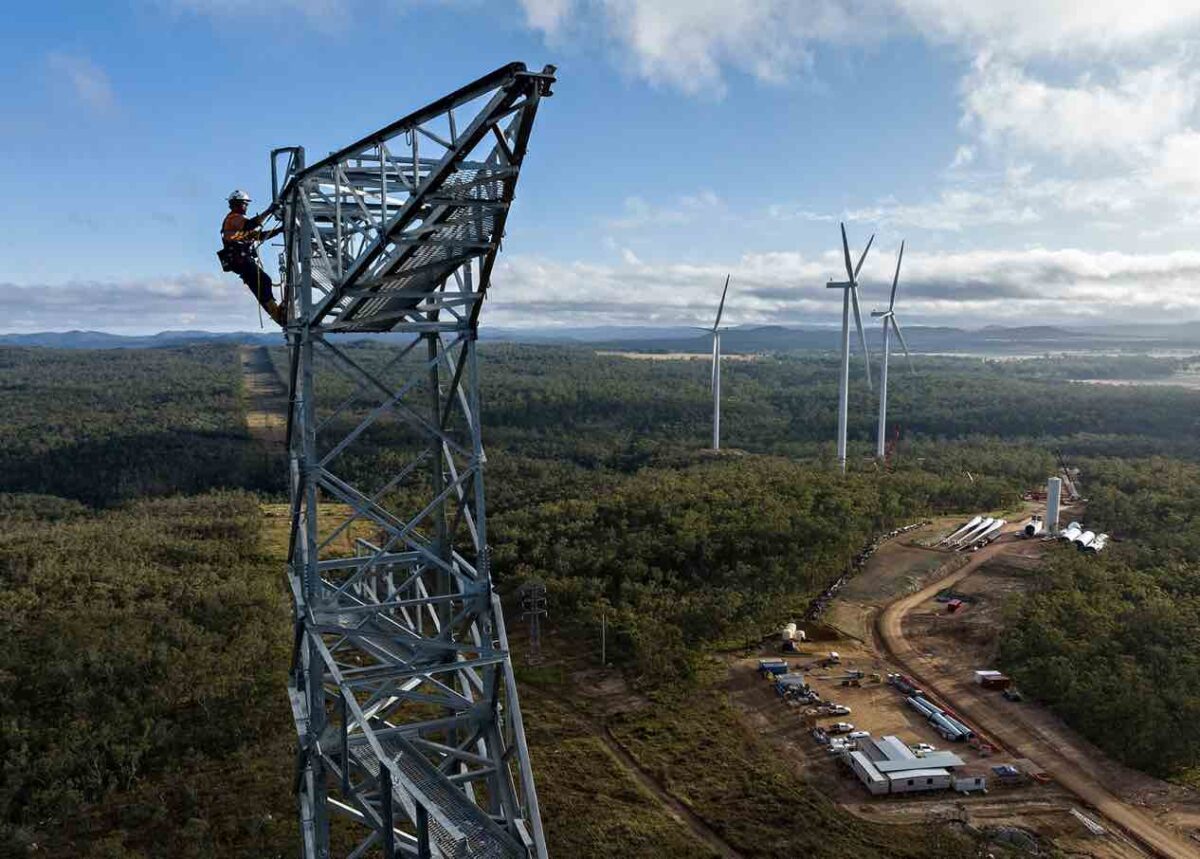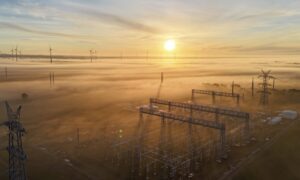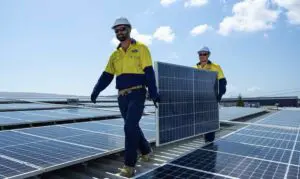The head of the Australian Energy Market Operator has confirmed that the renewable energy transition is not moving fast enough to meet the federal government’s 2030 targets, despite a massive pipeline of projects waiting in the wings.
The federal Labor government has interim targets of a 43 per cent cut in emissions by 2030, driven by a target of 82 per cent renewables in the national grid by that date.
But AEMO CEO Daniel Westerman says that while the market is responding to the anticipated closure of coal fired power stations with investment in renewable energy, firming generation and storage, it is too slow to meet those targets.
“This investment is not happening fast enough,” Westerman told the Australian Energy Week conference in Melbourne on Tuesday.
“There is a strong pipeline of potential future generation projects proposed for the National Electricity Market, totalling over 200 GW. Half of these are wind projects, and there’s 40 GW of proposed battery storage.
“But the crucial word here is ‘proposed’.
“Bringing these new projects to market and connecting them into the grid urgently is critical to ensure consumers continue to have reliable power when they need it.”
Many in the industry have suggested that the slowdown in new investment – no new projects reached financial close in the first quarter of 2023, according to the Clean Energy Council – is a result of problems around the connection process, and the lack of infrastructure.
“We are connecting these new projects as quickly as we can,” Westerman said. “On the east coast we have 163 projects comprising more than 27 GW of new generation going through different stages of the connection process.”
AEMO has been working with the CEC to resolve some of the connection issues, and at ways to reduce the complexity and cost of getting connection agreements, registering and commissioning new projects.
But only this week it was revealed by RenewEconomy that the country’s biggest wind project – the 1GW MacIntyre wind precinct in Queensland – is being held up by difficulties over connection agreements.
The delays caused by this, plus the added costs of wind energy caused by higher equipment and labour costs, has caused the state-owned CleanCo to dump plans to build a 103MW wind farm as part of that facility.
Westerman said Australia’s grid should be “among the most investable in the world”, but a recent report from EY saw Australia continue to slip down the attractiveness index for renewable energy projects. In 18 months it has slipped from 3rd in the world to 7th.
Westerman said there is no shortage of capital globally, and no shortage of capital to support Australia’s energy transition.
“So the principal way that we can better manage the tension between today and tomorrow is to ensure we have enough clean and dispatchable generation projects that are being developed and commissioned in time to allow our coal plants to gracefully retire,” he said.
But the speech offered little insight into how it can be done. Westerman reiterated the importance of the transmission projects identified by the Integrated System Plan, but like many big projects – including Snowy 2.0 and some key transmission links – these are at risk of delays.
“The pace of investment is critical, and it’s resolution is clearly not a fait accompli,” Westerman said.
He noted that AEMO is spending a lot of time and money trying to develop the “control room of the future” to ensure that is has the technology to manage high levels of renewables, including periods of 100 per cent instantaneous renewables in the main grid by 2025.
“Frankly, AEMO’s operational technology is not keeping pace with advances on the power system, or the exponential growth of data and the ability to analyse it in real time to gain insights to make decisions,” he said.
“So we are taking steps to modernise the toolkit that our control room operators have available, through our Operations Technology Program.
We are working closely with other system operators around the world to leverage our collective knowledge and investments.
“Others brand this work as the ‘control room of the future’, but in Australia that future is often already here.
Our capability uplift will help improve forecasting capabilities, visibility into real-time operational flows and disturbances, using smarter algorithms that can better manage ever larger data sets, and accommodating for more frequent, significant weather events.”








